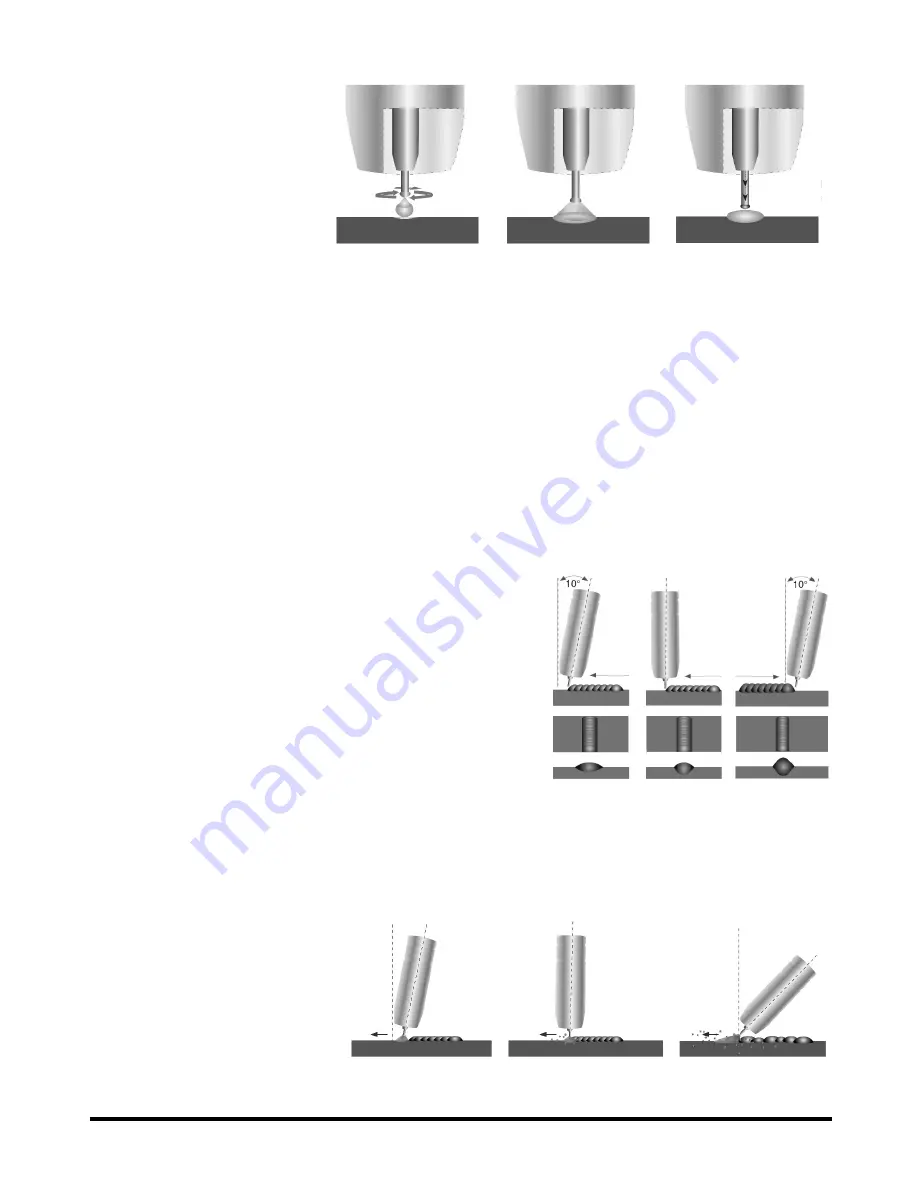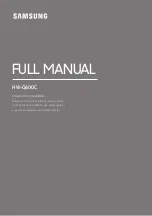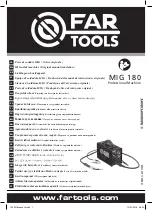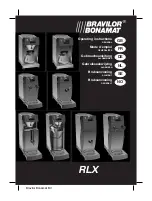
8611311
180 MULTI-PROCESS MIG-ARC-TIG WELDER
V1.0
20
For technical questions call 1-800-665-8685
4. The pinch causes the
forming droplet to
separate and fall to-
wards the now creating
weld pool (Fig. 30).
5. An arc is created at the
separation of the droplet
and the heat and force of
the arc flattens out the
droplet into the weld
pool. The heat of the arc melts the end of the wire slightly as it feeds towards the base
metal (Fig. 31).
6. The wire feed speed overcomes the heat of the arc and the wire again approaches the work
to short-circuit and repeat the cycle (Fig. 32).
BASIC MIG WELDING GUIDE
Good weld quality and weld profile depends on the gun angle, direction of travel, electrode
extension (stick out), travel speed, thickness of base metal, wire feed speed (amperage) and arc
voltage. To follow are some basic guides to assist with your setup.
GUN POSITION - TRAVEL DIRECTION, WORK ANGLE
Gun position or technique usually refers to how the wire is directed at the base metal, the angle
and travel direction chosen. Travel speed and work angle will determine the characteristic of the
weld bead profile and degree of weld penetration.
PUSH TECHNIQUE
The wire is located at the leading edge of the weld pool and pushed towards the un-melted
work surface. This technique offers a better view of the
weld joint and direction of the wire into the weld joint.
Push technique directs the heat away from the weld
puddle allowing faster travel speeds providing a flatter
weld profile with light penetration - useful for welding
thin materials. The welds are wider and flatter allowing for
minimal clean up / grinding time (Fig. 33).
PERPENDICULAR TECHNIQUE
The wire is fed directly into the weld, this technique is
used primarily for automated situations or when
conditions make it necessary. The weld profile is generally
higher and a deeper penetration is achieved (Fig. 34).
DRAG TECHNIQUE
The gun and wire are dragged away from the weld bead. The arc and heat is concentrated on the
weld pool, the base metal receives more heat, deeper melting, more penetration and the weld
profile is higher with more build up (Fig. 35)
TRAVEL ANGLE
Travel angle is the right to left
angle relative to the direction
of welding. A travel angle of 5°
to 15° is ideal and produces a
good level of control over the
weld pool. A travel angle
greater that 20° will give an
unstable arc condition with
poor weld metal transfer, less
penetration, high levels of spatter, poor gas shield and poor quality finished weld (Fig. 36)
Fig. 30
Fig. 31
Fig. 32
Fig. 35
Fig. 33
Fig. 34
Fig. 36
Angle 5° to 15°
Not Enough Angle
Angle more than 20°
















































